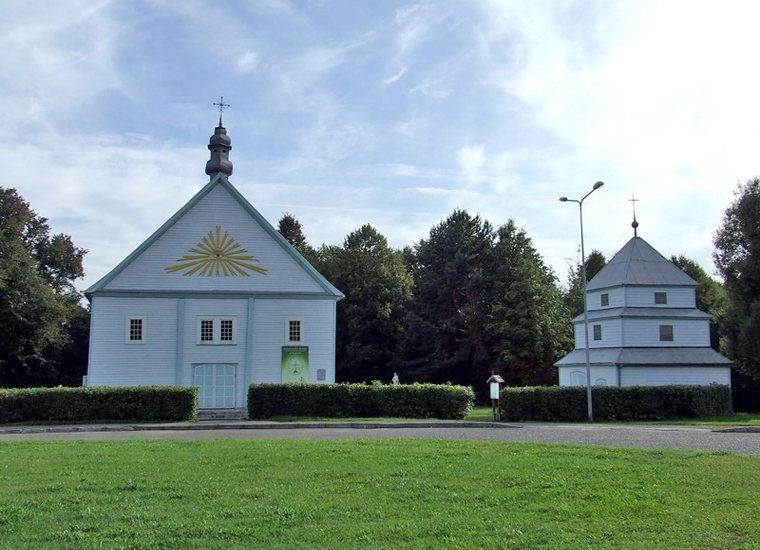Rumsiskes is a Lithuanian town (population 1,700), situated 20 km (12 mi) east of Kaunas on the northern bank of Kaunas Reservoir. Southern part of the town (including the birthplace of Lithuanian poet Jonas Aistis) is now under the waters of the artificial lake. The 18th century St. Michael Archangel church of Rumsiskes (rebuilt in the 19th century) was saved and moved to its present place in 1958, when the reservoir was created. History : Rumsiskes was first mentioned in the 14th century. In 1940–1941, a Soviet concentration camp was created in a nearby village of Pravieniskes. After 1941 the camp was used by the Nazis. All members of the Jewish community were murdered by the Nazis and Lithuanian nationalists near Rumsiskes during World War II. One of the most well-known Jews of this locale is Rabbi Haim, known best for the Jewish adaptation of allegory of the long spoons.
Kaunas Lagoon now lies in the place of the old Rumsiskes. The old town was flooded as a result of the construction of Kaunas hydroelectric power station, while the main objects – St. Michael the Archangel Church, its bell tower and the chapel that stands in the current Rumsiskes town cemetery – were moved.
Access : Coordinates: 54.863889, 24.216667 / Public transport (buses) are available from Kaunas and Vilnius (direction – Rumsiskes). 1, 82, 88, 118 minibuses from Kaunas station „Kalnieciu poliklinika“ to „Rumsiskiu paviljonas“ are available. trains – from Kaunas and Vilnius to railway station „Pravieniskes“ are available. Every Sunday (from May to September) at 11 a. m., ship goes from Kaunas Lagoon pier near Pazaislis to Open Air Museum of Lithuania.
Attractions : Panoramic tower in Rumsiskes / Lithuanian Open-air ethnographic museum in Rumsiskes / St. Anne Chapel / St. Anthony Chapel / St. Michael Archangel church in Rumsiskes
Events : Uzgavenes
Uzgavenes (literall meaning – the time before Lent) – a festival to drive the winter out. It is the oldest festival of its kind known in all of Europe. Lithuanians celebrate the annual festival in Open-Air Museum in Rumsiskes. Festival takes place during the seventh week before Easter. Uzgavenes begins on the night before Ash Wednesday, when an effigy of winter, named More, is burnt. It celebrates the end of winter and the beginning of spring. Another popular festival tradition is a staged theatrical fight between Lasininis (porky) personifying winter and Kanapinis (hempen man) personifying spring. Kanapinis always wins. Devils, witches, goats, the grim reaper, gypsies, and other joyful and frightening characters appear in costume during the celebrations. The traditional dish of the holiday is pancakes with a variety of toppings. Round pancakes symbolize the returning sun.
Go next : Kapitoniskes / Pravieniskes / Grabuciskes / Ziezmariai / Kaisiadorys / Kaunas

